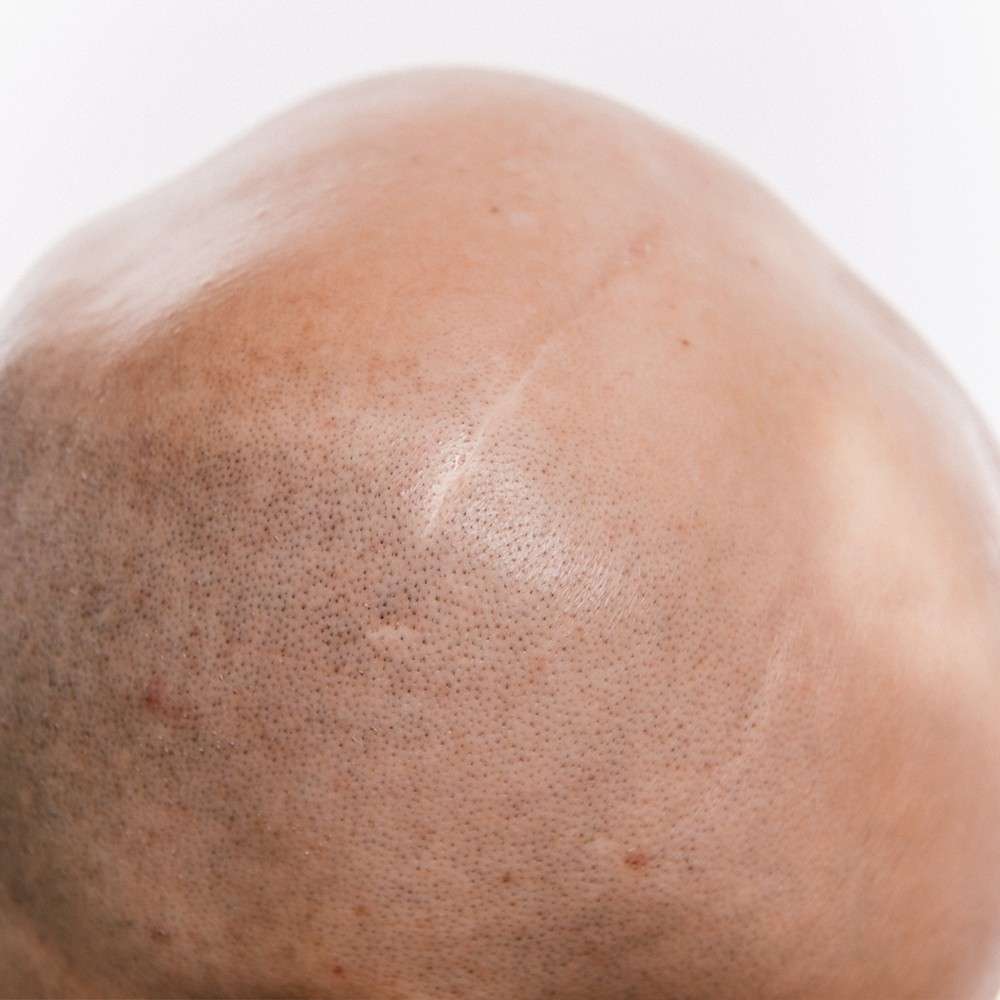Scalp scars refer to any type of scarring that occurs on the scalp. These scars can be caused by a variety of factors, including injuries, burns, surgeries, or medical conditions such as alopecia areata or traction alopecia.
Scalp scars can range from small and barely visible to large and disfiguring. Some scalp scars may be raised or bumpy, while others may be flat or sunken. In addition to their appearance, scalp scars can cause hair loss or changes in hair growth patterns. For example, a scar on the hairline may cause hair to grow in a different direction or not at all.
Scalp micropigmentation (SMP) and microneedling are two treatment options at Beauty Pro NYC that can help improve the appearance of scalp scars.
Scalp micropigmentation involves the use of tiny, sterile needles to deposit pigment into the scalp. This technique can be used to create the appearance of a shaved head or to camouflage scars or areas of hair loss. SMP can be a good option for those who do not want to undergo surgical procedures and prefer a non-invasive treatment option. The results of SMP can last for several years and may require touch-ups over time.
Microneedling Sera is a technique that involves using a small device with fine needles to create tiny punctures in the skin. This can stimulate collagen production and improve the appearance of scars. Microneedling can be done on the scalp to help reduce the appearance of scars and promote hair growth. It is combined with mesotherapy serum Sera to enhance its effects.
Topical serums, such as DMK Beta Gel containing growth factors or peptides, can also be used to improve the appearance of scalp scars. This serum can be applied directly to the scalp and can help promote collagen production and improve skin texture.
It’s important to note that while SMP, microneedling, and topical serums can be effective for reducing the appearance of scalp scars, they may not work for everyone. The results of these treatments can also vary depending on the severity and location of the scar.

Scalp scarring can be caused by a variety of factors, including:
Physical Trauma: Accidents, falls, or other types of physical trauma can cause cuts, lacerations, or contusions on the scalp, which can result in scarring.
Surgery: Scalp surgery, such as hair transplant surgery, can leave scars on the scalp.
Burns: Burns from chemicals, heat, or radiation therapy can result in scalp scarring.
Medical Conditions: Certain skin conditions, such as acne, folliculitis, or lupus, can cause scarring on the scalp.
Autoimmune Diseases: Autoimmune diseases like alopecia areata, which causes hair loss, can lead to scarring of the scalp.
Infections: Infections of the scalp, such as fungal infections, can cause scarring if left untreated.
Genetic Factors: Some people may be more prone to developing scars due to genetic factors.
It’s important to note that not everyone who experiences physical trauma, surgery, or medical conditions will develop scalp scars. Factors such as the severity of the injury or the location of the scar can influence whether or not scarring occurs.
Scars on the scalp can be permanent, but their appearance can be improved with treatment. The severity and type of scar, as well as the location on the scalp, can impact the chances of the scar being permanent.
Scars form when the skin is injured, and the body produces collagen to heal the wound. This collagen production can cause the skin to thicken and create a raised or depressed scar. Scarring on the scalp can result from various factors such as surgery, burns, injuries, or medical conditions.
While scars can fade and become less noticeable over time, they typically do not go away completely on their own. However, there are several treatment options available to improve the appearance of scalp scars, including scalp micropigmentation, microneedling, and topical serums.
It’s important to note that the success of scar treatment can vary depending on several factors such as the type and severity of the scar, location on the scalp, and individual healing capacity.
There are certain steps you can take to reduce the risk of developing scars on your scalp. Here are some tips:
Protect your scalp: If you engage in activities that may result in head injuries, such as contact sports, always wear protective headgear.
Practice good wound care: If you have a cut or wound on your scalp, clean it immediately with soap and water and cover it with a sterile bandage until it heals. Avoid picking at scabs, as this can increase the risk of scarring.
Seek medical treatment promptly: If you have a scalp infection, seek prompt medical treatment to prevent it from progressing and potentially causing scarring.
Follow post-surgery care instructions: If you undergo scalp surgery, such as hair transplant surgery, follow your surgeon’s post-operative care instructions carefully to reduce the risk of scarring.
Manage underlying medical conditions: If you have a medical condition that affects your scalp, such as acne or lupus, work with your healthcare provider to manage it effectively and reduce the risk of scarring.
Avoid tight hairstyles: Wearing tight hairstyles, such as braids or cornrows, can put tension on the scalp and increase the risk of scarring. Opt for looser styles instead.
Practice good scalp hygiene: Regularly shampoo your hair to keep your scalp clean and healthy. This can help prevent conditions like folliculitis, which can cause scarring if left untreated.











Elena is a licensed esthetician with over 6 years of experience in the industry. She has worked on clients from all around the world and has decided to open up her own shop in NYC. At our location, we offer multiple med spa treatments and services that are sure to leave you feeling rejuvenated. For more information, please refer to my Instagram @probeauty.nyc!
© All Rights Reserved – Beauty Pro NYC.
Handcrafted with ❤️ by Online Marketing R Us.